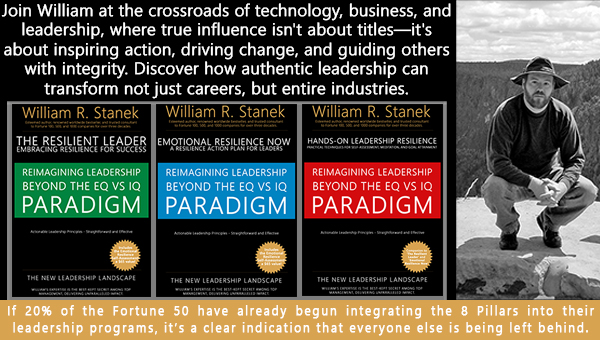
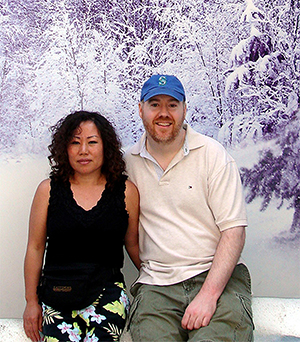
Mindful Living
Discover how mindfulness can enrich your daily life. Whether you're new to the practice or deepening your journey, these insights from William and Hui Cha Stanek provide guidance on living with awareness, purpose, and connection.
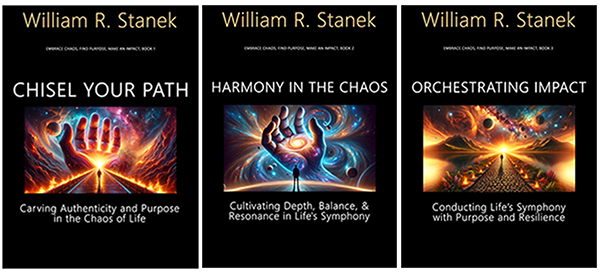
Transform your life with practical wisdom. Discover William Stanek's 'Living Well' series—your guide to a balanced and fulfilling life.
Discover William Stanek's Exclusive Art Collection
Explore and purchase the stunning art featured on this site. Own a piece of William Stanek's unique and captivating artwork today!
(April 25, 2025) The Art of Emotional Resilience: Bouncing Back, Stanek-Style
Life doesn’t hand out resilience on a silver platter. It’s something that’s forged in the fires of adversity, hammered into shape by the blows of life’s toughest challenges. For Hui Cha and me, resilience wasn’t just a trait—it was a necessity. It was what kept us going through the darkest times, when the weight of loss, war, and personal battles threatened to crush us. But we didn’t just survive; we found a way to thrive. And that’s what this story is about: how emotional resilience became our lifeline, and how it can become yours too.
When I think back on the hardest moments of my life—the devastating losses, the relentless challenges, the times when it felt like the world was falling apart—one thing stands out: resilience. Not the kind that’s about toughing it out or pretending everything is fine, but the kind that’s about facing reality head-on, feeling every emotion, and then rising again, stronger and more determined than before.
For Hui Cha and me, resilience wasn’t an abstract concept. It was something we lived, something we had to cultivate through every trial and tribulation. From the trauma of losing loved ones to the brutal realities of war, we learned that resilience isn’t just about bouncing back—it’s about transforming through the process, emerging on the other side not just intact, but better, wiser, and more compassionate.
What Is Emotional Resilience? Lessons from a Life Lived on the Edge
Emotional resilience is the ability to adapt and recover in the face of adversity, stress, or trauma. It’s not about avoiding pain or pretending that everything is okay. Instead, it’s about acknowledging the pain, processing it, and finding a way to move forward with greater strength and understanding. It’s about bending without breaking, about being flexible enough to withstand life’s storms but strong enough to remain standing.
For us, emotional resilience was born out of necessity. Life threw everything it had at us—loss, illness, the brutal realities of war—and we had to find a way to keep going. But more than that, we had to find a way to thrive. And that’s where resilience came in. It was the thread that held us together when everything else was falling apart.
One of the key lessons we learned is that resilience isn’t something you’re born with—it’s something you build. It’s a muscle that gets stronger with use, a skill that you develop through experience. And like any skill, it requires practice, patience, and persistence.
Cultivating Resilience: Mindfulness Practices for Tough Times
Mindfulness played a crucial role in helping us build our resilience. It wasn’t just about staying calm or finding peace—it was about developing the mental and emotional tools we needed to face life’s challenges head-on. Here are some of the mindfulness practices that helped us cultivate resilience during our toughest times:
-
Mindful Acceptance: Facing Reality with Open Eyes
One of the hardest but most important aspects of resilience is accepting reality as it is. This doesn’t mean giving up or resigning yourself to fate—it means acknowledging what’s happening, even when it’s painful, and allowing yourself to feel all the emotions that come with it. Mindful acceptance is about being fully present with your experience, without judgment or denial.
How to Practice Mindful Acceptance:
- When you’re faced with a difficult situation, take a moment to pause and breathe.
- Acknowledge what’s happening, both externally and internally. Notice your thoughts, emotions, and physical sensations.
- Allow yourself to feel whatever emotions arise, without trying to change or suppress them.
- Remind yourself that it’s okay to feel pain, anger, sadness, or fear. These emotions are a natural response to adversity.
-
Gratitude in Adversity: Finding the Silver Lining
Gratitude might seem like the last thing you’d focus on in tough times, but it’s a powerful tool for building resilience. By finding small things to be grateful for, even in the midst of hardship, you can shift your perspective and open yourself up to hope and possibility. Gratitude doesn’t erase the pain, but it helps you see beyond it, to the things that are still good and still worth fighting for.
How to Practice Gratitude in Tough Times:
- Each day, take a few minutes to reflect on something you’re grateful for, no matter how small. It could be a supportive friend, a moment of peace, or even the strength you find within yourself.
- Write down your gratitude in a journal, or simply take a mental note. The act of acknowledging it is what’s important.
- Whenever you find yourself overwhelmed by negative emotions, return to your gratitude. Let it be a source of light in the darkness.
-
Breathing Through the Storm: The Power of the Breath
When life gets overwhelming, it’s easy to feel like you’re drowning in emotions. That’s where mindful breathing comes in. By focusing on your breath, you can create a moment of calm in the midst of chaos, a moment where you can regroup, find your center, and prepare to face whatever comes next.
How to Practice Mindful Breathing:
- Find a quiet place where you can sit comfortably.
- Close your eyes and take a deep breath in through your nose, filling your lungs completely.
- Hold the breath for a few seconds, then slowly exhale through your mouth.
- Continue to breathe deeply and slowly, focusing all your attention on the sensation of your breath moving in and out of your body.
- If your mind starts to wander, gently bring it back to your breath. Allow your breath to anchor you in the present moment.
-
Reframing Negative Thoughts: Turning Obstacles into Opportunities
Resilience isn’t just about surviving adversity—it’s about transforming it. One of the most powerful tools for doing this is the ability to reframe negative thoughts. Instead of seeing obstacles as insurmountable barriers, you can learn to see them as opportunities for growth and change. This doesn’t mean ignoring the challenges or pretending everything is fine. It means recognizing that within every challenge lies the potential for transformation.
How to Reframe Negative Thoughts:
- When you catch yourself thinking negatively about a situation, pause and take a deep breath.
- Ask yourself if there’s another way to view the situation. What opportunities for growth or learning might it present?
- Consider how this challenge might help you develop new skills, gain new insights, or strengthen your resilience.
- Write down your reframed thought and keep it somewhere you can see it. Use it as a reminder that you have the power to transform adversity into opportunity.
The Staneks’ Journey Through Adversity: A Story of Loss, War, and Recovery
Our journey through adversity is one of resilience, not because we were immune to pain, but because we learned how to navigate it, grow from it, and ultimately rise above it.
The Early Years: Loss and Resilience
For me, resilience was something I had to learn early on. Growing up in Racine, Wisconsin, I faced more than my share of challenges. My childhood was marked by tragedy when my stepfather and sister were killed in an explosion. This loss was devastating, and it forced me to grow up quickly. I had to learn how to carry on, even when it felt like the ground had been ripped out from under me.
In those early years, resilience meant survival. It meant getting up every day, putting one foot in front of the other, and finding a way to keep going. But as I grew older and faced new challenges, I began to understand that resilience was about more than just surviving—it was about finding strength and meaning in the midst of adversity.
The Gulf War: Resilience on the Battlefield
My time in the military, particularly during the Gulf War, tested my resilience in ways I never could have imagined. The physical and mental demands were immense, and the constant threat of danger weighed heavily on me. But it was during these years that I truly began to develop the emotional resilience that would carry me through the rest of my life.
Mindfulness became a crucial tool during this time. It helped me stay focused, manage stress, and process the intense emotions that came with being in a warzone. Through mindfulness, I learned how to face my fears head-on, to acknowledge the pain and fear without letting them consume me. This practice didn’t make the challenges go away, but it gave me the strength to face them with courage and clarity.
The Aftermath: Recovery and Renewal
After the war, both Hui Cha and I faced new challenges. The physical toll of my service, including the effects of Gulf War Syndrome, coupled with the emotional strain of multiple miscarriages, tested our resilience in ways we hadn’t anticipated. There were days when it felt like the weight of it all was too much to bear. But we refused to give up.
Together, we leaned on the mindfulness practices we had developed, using them to navigate the pain, the uncertainty, and the fear. We practiced mindful acceptance, allowing ourselves to grieve, to feel the pain, but also to find hope in the midst of it. We focused on gratitude, finding small moments of joy and connection that helped us stay grounded. And we practiced mindful breathing, creating moments of calm in the storm.
Through these practices, we found a way to not only survive but to rebuild our lives. We learned that resilience isn’t about bouncing back to where you were before—it’s about moving forward to a new place, a place where you’re stronger, wiser, and more compassionate.
Exercises for Building Emotional Resilience: The Stanek Approach
Building emotional resilience is a journey, one that requires patience, persistence, and practice. Here are some exercises that can help you cultivate the resilience that has been so vital to our own journey:
-
Identifying Negative Thoughts:
- Start by becoming aware of your negative thoughts. Throughout the day, take note of any thoughts that are focused on fear, doubt, or self-criticism. Write them down in a journal.
- Once you’ve identified a negative thought, ask yourself: Is this thought helping me or holding me back? Is there another way to view the situation?
- Practice reframing the thought. For example, if you’re thinking, “I can’t handle this,” reframe it as, “This is challenging, but I have the strength to get through it.”
-
Mindful Journaling:
- Set aside time each day to journal about your experiences, emotions, and thoughts. Use this time to reflect on the challenges you’re facing and how you’re responding to them.
- Focus on writing without judgment. Allow yourself to express whatever you’re feeling, whether it’s anger, sadness, or fear. This practice can help you process your emotions and gain clarity.
-
Gratitude Reflection:
- Each evening, take a few minutes to reflect on three things you’re grateful for. These could be small moments of joy, acts of kindness, or simply the strength you found within yourself to keep going.
- Write down your reflections in a gratitude journal. Over time, this practice can help you shift your focus from what’s wrong to what’s right in your life, building a foundation of positivity and resilience.
-
Mindful Acceptance Meditation:
- Practice a meditation focused on acceptance. Find a quiet place where you won’t be disturbed, sit comfortably, and close your eyes.
- Bring to mind a challenge you’re currently facing. Notice any emotions that arise as you think about this challenge.
- Instead of pushing the emotions away, allow yourself to feel them fully. Breathe into the discomfort, accepting it without judgment.
- Remind yourself that it’s okay to feel pain, fear, or uncertainty. These emotions are part of being human, and by accepting them, you’re allowing yourself to move through them.
Conclusion: The Power of Resilience
Our journey through adversity has taught us that true strength often emerges from life’s deepest struggles. Emotional resilience isn’t about avoiding pain or pretending that everything is okay. It’s about facing reality with open eyes, feeling every emotion, and then finding a way to rise again, stronger and more determined than before.
For Hui Cha and me, resilience has been our lifeline. It’s what has allowed us to navigate the darkest times, to rebuild our lives after loss, and to continue moving forward even when the road ahead seemed impossible. And it’s something that we believe everyone can cultivate, no matter what challenges they’re facing.
So, if you’re going through a tough time, remember this: You are stronger than you know. You have the capacity to face whatever life throws at you, to feel the pain and still find a way to move forward. Use the tools of mindfulness, gratitude, and acceptance to build your resilience, and know that you’re not alone. We’ve walked this path, and we’ve come out the other side—not unscathed, but stronger, wiser, and more compassionate.
Resilience isn’t about bouncing back—it’s about bouncing forward, with the strength and wisdom that only adversity can bring. And in that, there is not just survival, but the potential for profound growth and transformation.
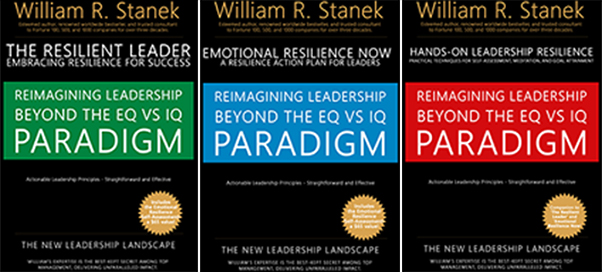
Join William at the crossroads of technology, business, and leadership, where true influence isn't about titles - it's about inspiring action, driving change, and guiding others with integrity. Discover how authentic leadership can transform not just careers, but entire industries.
Bring Inspiration Home
Enhance your space with William Stanek's evocative art. Each piece is crafted to inspire and uplift your everyday life.
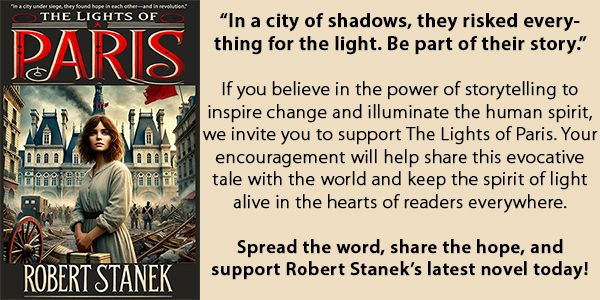
Support The Lights of Paris by Robert Stanek, William Stanek's pen name! Through vivid historical detail and deeply moving character stories, Robert takes readers on an unforgettable journey through one of history’s most transformative times.
